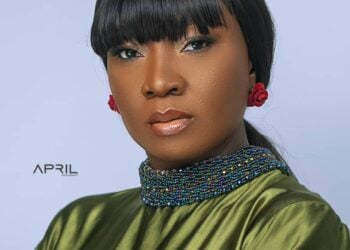The concept of nudity in today’s world by African standards is seemingly regarded as wrong and vulgar. Women are shamed and labelled for showing a little skin (or in some cases excessive skin), men who do the same are either praised as masculine and beautiful or in extreme cases depending on your living location and community, it’s seen as vulgar too. Yet fashion magazines, curated platforms on social media praise the effervescent colouring wrapped in oiled nudity for Africans as art to be worshipped and adored. As one who has worked in very diverse industries, I must admit that the showcase of any type of nudity (when it’s “clean” can be very alluring and sensual) is a bit admirable and brave (you can disagree). For generations before the fusion of clothes and the notion of covering up in Africa, men, women and children walked proudly; barely or, sometimes not at all, covered, showing off glittering dark skin that shines brilliantly and valiantly. Bottoms and hips swayed proudly, men pumped their chest muscles with pride with back muscles rippled in pure delight and pot bellies bounced without discrimination or shame.
Ah, nudity, the thin line of “its beautiful and its vulgar”, Nudity in its glory is the one thing that never seems to go out of style. Despite its everlasting trend, nudity still provokes gossip sharper than a freshly shined knife. Over the years through study and observation, in relation to our unique context of African art and culture, the acceptance of nudity is often a challenging topic, unfolding various tales, splashed with history, religion, and cultural expression, that many seem to forget or purposefully ignore, While some cultures might quickly dismiss nudity as vulgar (mentioned this earlier), many in Africa are beginning to peel back layers (pun happily intended) to reveal a deeper appreciation for the nude form, while doing their best in striving to avoid the pitfalls of perversion or sordid indulgence.
So, if you are new to reading any article I have written…welcome to that article section that gives you alternative insights and perspectives into daily societal cases and issues while teaching you how to either appreciate scenarios or possibly prevent them. To the old, having you here is definitely always a plus. So let us dive right into it, shall we? Let us dive into the depths of understanding nudity in Africa in relation to art and more, the ifs, the buts and the why-nots in THE NAKED TRUTH: EMBRACING NUDITY IN AFRICAN ART AND CULTURE. This will definitely be served hot or cold, let your mind decide! Remember, deep breaths and let’s jump, shall we?
The Strip Down: Essence
“In Africa, music is not an art form as much as it is a means of communication.” Vernon Reid
As we take this artistic yet conversational dive into embracing nudity as Africans, here is a question I want to ask you: as a Nigerian or African, if colonialism never occurred, do you believe that you would see or regard nudity as vulgar? Remember, our ancestors were often naked or partially clothed and no one screamed ‘taboo’! It was part of daily life, admired and fortunately not wrought with the sins and crimes that plague today’s society over the concept of “bare skin”(even women who are draped from head to toe are still attacked and assaulted). So let us begin with the elephant in the room: nudity. In many African communities, the human body is still reverently viewed as a temple, often intricately connected to cultural identity and spirituality. An example to highlight this is the traditional African sculptures we see today (especially the really old ones) with their fluid definitive forms and crafted nudity that beautifully showcase much more than mere flesh; they speak softly of tales filled with our ancestry, identity, heritage and the recurrent dance between life and death, of ages past and possible futures unknown. For instance, look no further than the Samburu and Turkana peoples found in the Nuba of Southern Sudan, who have long used the nude form to symbolise strength, acceptance, appreciation, diligence and cleanliness, or the Koma people of Nigeria found in the Alantika Mountains, around the southeast of Yola that symbolise nudity as beauty, creativity, even divinity. Last time I checked, it is hard to label a striking bronze statue of a woman with exaggerated features — large breasts and pronounced hips that symbolise fertility — as indecent. Perhaps it is time we, as people, rethink our relationship as well as our understanding of nakedness. After all, the ‘horrors’ one might associate with nudity more often stem from suppressed curiosity or innate violent tendencies rather than from public display. In short, people are the problem, not nudity itself.
The Abyss: Art Meets Creativity
The art world has, of course, acted as both a positive and negative mirror, as well as a magnifying glass for society’s evolving—or unfortunately devolving—understanding of nudity. Thanks to contemporary African artists, who are now daring enough to challenge present societal norms and push boundaries, nudity is artistically and effectively utilised as a means of expression that resonates with viewers on multiple levels rather than being seen as obscene. The digital art explosion, along with the rapidly evolving nature of social media, has transformed how today’s artists utilise platforms far beyond the conventional dusty canvas, redefining and bringing the naked form to life through pixels alone.
Nigerian artist Yagazie Emezi, a self-taught photojournalist, harnesses the beauty of the nude body to tell the stories of women navigating their place in a patriarchal world. This often results in nuanced dialogues that seek to blend empowerment with vulnerability while shining a much-needed light on women’s health. The key takeaway is understanding that as art evolves digitally, it seeks to fuse the unadorned form of man or woman with technology, in order to birth a new, relatable understanding and language; changing the unabashed narrative of a mischievous yet solid point of view on self-love and body positivity. It is important to recognise that digital nudity is not always screaming “Look at me!” or “Notice me!”; it gently urges, in more ways than one, to “Look within.”
Underpinning: The Religious
“Africa has her mysteries, and even a wise man cannot understand them. But a wise man respects them.” — Miriam Makeba
Religion, the one sore yet enlightening topic that some either challenge or choose to tiptoe around, either in fear of being CANCELLED or due to faith and understanding; simply accept what is without ever challenging it, even when it is outrightly abused and negative in its impact on a person, society, or community. Regardless of our thoughts, beliefs, or differences, we cannot afford to dance around this subject (religion) without acknowledging the definitive role of religion in shaping attitudes toward the nude form in Africa. For many, the knowledge of the great divine has traditionally embraced both the clothed and unclothed. An informative visual journey through the history of African spirituality often reveals many depictions of gods, spirits, and ancestors with little to no clothing. Take, for instance, the Yoruba goddess/deity Oshun, who is often portrayed nude or semi-nude, reverent in her impartial beauty and opulence, radiating life-giving energy.
Of course, the introduction of more conservative religions led to a nerdy clash between sacred and secular perceptions of nudity—imagine that awkward family dinner where faiths are divided yet you must tolerate your own while doing your best (hefty arguments included) to convince the other party to bend or submit to your will or belief (imagine a mixed dinner of fully clothed, semi-nude, and fully nude members all at the table together—oh, what an entertaining dinner it would be!). Here is another takeaway: no one is exactly wrong based on their perspective, yet there will always be a more dominant mindset that eventually prevails. However, willfully understanding the written, visual, and oral narrations of historical contexts helps peel away long-seated misconceptions. The naked form (especially African) isn’t merely a vehicle for temptation; it must be recognised as a vessel for reverence, creation, and originality.
Charged Conversations: Culturally
While happily researching this topic, as I often do before writing while indulging in the art of self-immersion, I found myself exploring a write-up on OkayAfrica entitled “Parallel Histories: Naked Protest and African Feminism.”
It stated: “In the last couple of years, the Ukrainian women’s group FEMEN, with branches across Europe, North Africa, and the Middle East, has grabbed headlines for its members’ nude protest actions. As Maryam Kazeem pointed out in a previous piece, African women staged their own naked protests throughout the twentieth century, most famously during the 1929 Women’s War in southeastern Nigeria (the Aba Women’s Riot), and continue to use nudity en masse as a weapon in their struggles down to the present. The point is not simply that sub-Saharan African women have engaged in similar tactics and have done so over a long period. Rather, this parallel history illustrates that African women’s collective action—and by extension, African feminism—emerged from relatively distinct roots and routes, and cannot be reduced to a derivative or imitation of Euro-American models.”
This basically details that nothing new is under the sun; it is either simply misunderstood, repeated, or reinvented across generations as a point of expression and a call to collaborate for the betterment of people, communities, and society as a whole. As we Africans continue to engage in serious dialogues around the importance and impact of identity, heritage, culture, beliefs (personal and religious), colonialism, and globalisation, nudity will continue to emerge (throughout time) not only as a powerful form of self-expression but also as a reflection of evolving cultural dynamics. The more people frantically seek to cover their “nakedness” in shame (and those without self-control or violent tendencies, viewing through distorted and broken lenses, keep behaving badly), the more that nudity becomes, unfortunately, a taboo—with overwhelming tension bubbling just beneath the surface. It’s about time we change that narrative, right?
Conclusion: Leaving Adornments Behind
“Africa gives you the knowledge that man is a small creature amongst other creatures in a large landscape.” — Doris Lessing
Over the years, thanks to privilege and learning, there is an understanding that a lot of what we, as people of today, term as vulgar, bad, indecent, or obscene were really just everyday life, times, and joys of people, cultures, and civilisations that lived before us. Unfortunately, due to greed, dominance, control, selfishness, and misconceptions, humanity’s evolving nature now distorts what was and what could have been, what is trying to make a comeback, and what might be repeated as taboo. With continued discourses like this, whether written, verbal, or visual, we can steadily learn, embrace, and understand why nudity is part of us and should not be seen as evil or abhorrent. By slowly yet progressively grasping the artistic relevance of nakedness, we should push more to see things with self-acceptance, body positivity, and the multifaceted narratives that connect us. Nudity should not just be a topic for art galleries or a fleeting moment on social media; it should be a bold leap toward thoughtful interactions, a daring invitation to explore the human experience without unnecessary cover-ups.
After all, the naked truth is that embracing the art of nudity is not simply about reveling in bare skin, but acknowledging the stories, histories, and cultures that shape who we were, are, and will be, and what we cherish. And perhaps, just perhaps, it will propel us to shed those metaphorical layers of ignorance, prejudice, and discomfort that keep us from celebrating our humanity. So, as we tiptoe—or perhaps leap—into a future where nudity can be celebrated rather than shamed, it’s imperative that we ground our understanding in history, culture, and faith. Until next time, my dear readers, bye.





